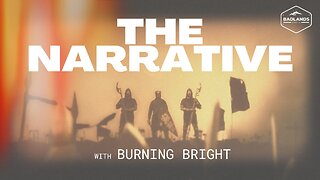Premium Only Content

What is WHITE-COLLAR WORKER?
✪✪✪✪✪
http://www.theaudiopedia.com
✪✪✪✪✪
What does WHITE-COLLAR WORKER mean? WHITE-COLLAR WORKER meaning - WHITE-COLLAR WORKER definition - WHITE-COLLAR WORKER explanation. What is the meaning of WHITE-COLLAR WORKER? What is the definition of WHITE-COLLAR WORKER? What does WHITE-COLLAR WORKER stand for? What is WHITE-COLLAR WORKER meaning? What is WHITE-COLLAR WORKER definition?
In many countries (such as Australia, Canada, New Zealand, United Kingdom, or the United States), a white-collar worker is a person who performs professional, managerial, or administrative work. White-collar work is performed in an office, cubicle, or other administrative setting. Other types of work are those of a blue-collar worker, whose job requires manual labor and a pink-collar worker, whose labor is related to customer interaction, entertainment, sales, or other service-oriented work. Many occupations blend blue, white and pink (service) industry categorizations.
The term refers to the white dress shirts of male office workers common through most of the nineteenth and twentieth centuries in Western countries, as opposed to the blue overalls worn by many manual laborers.
The term "white collar" is credited to Upton Sinclair, an American writer, in relation to contemporary clerical, administrative, and management workers during the 1930s, though references to white-collar work appear as early as 1935.
Formerly a minority in the agrarian and early industrial societies, white-collar workers have become a majority in industrialized countries due to modernization and outsourcing of manufacturing jobs.
The blue-collar and white-collar descriptors as it pertains to work dress may no longer be an accurate descriptor as office attire has broadened beyond a white shirt and tie. Employees in office environments may wear a variety of colors, may dress business casual or wear casual clothes altogether. In addition work tasks have blurred. "White-collar" employees may perform "blue-collar" tasks (or vice versa). An example would be a restaurant manager who may wear more formal clothing yet still assist with cooking food or taking customers' orders or a construction worker who also performs desk work.
Less physical activity among white-collar workers has been thought to a key factor in increased life-style related health conditions such as radiation sickness, fatigue, obesity, diabetes, hypertension, cancer, and heart disease. Workplace interventions such as alternative activity workstations, sit-stand desks, promotion of stair use are among measures being implemented to counter the harms of sedentary workplace environments. A Cochrane systematic review published in 2016 concluded that "at present there is very low quality evidence that sit-stand desks can reduce sitting at work at the short term. There is no evidence for other types of interventions." Also, evidence was lacking on the long term health benefits of such interventions.
-
 1:26
1:26
The Audiopedia
1 year agoWhat is MOTTO?
50 -
 LIVE
LIVE
SpartakusLIVE
6 hours agoThe BADDEST Duo in WZ Exhibits PEAK Physique || Duos w/ Sophiesnazz to start, quads later
16,521 watching -
 2:49:37
2:49:37
RattlesnakeTV
18 hours ago $0.08 earnedLIVE DEBATE! Lord Jake vs Crazy Feminist
4.75K3 -
 LIVE
LIVE
Badlands Media
9 hours agoThe Narrative Ep. 35: Codex of Truth
5,848 watching -
 3:55:56
3:55:56
Due Dissidence
12 hours agoSchmuley TRASHES Shapiro, Maxwell Sings For Pardon, Uhuru Doc Preview - Live From St. Louis!
27.9K36 -
 LIVE
LIVE
Lofi Girl
2 years agolofi hip hop radio 📚 - beats to relax/study to
375 watching -
 2:23:21
2:23:21
PandaSub2000
5 days agoLIVE 9:30pm ET | MADISON VR (The Scariest Game Ever Made)
9.88K1 -
 2:34:32
2:34:32
Badlands Media
5 days agoCODEX 9/11
270K225 -
 1:53:43
1:53:43
Nerdrotic
7 hours ago $0.29 earnedMysteries of 3I/ATLAS | Forbidden Frontier #113
41.6K5 -
 2:04:21
2:04:21
vivafrei
1 day agoEp. 278: D.C. Peace Wave! Big Tish & Nipple Judge SPANKED! "Maryland Man" Trafficker FREE & MORE?
90.7K116